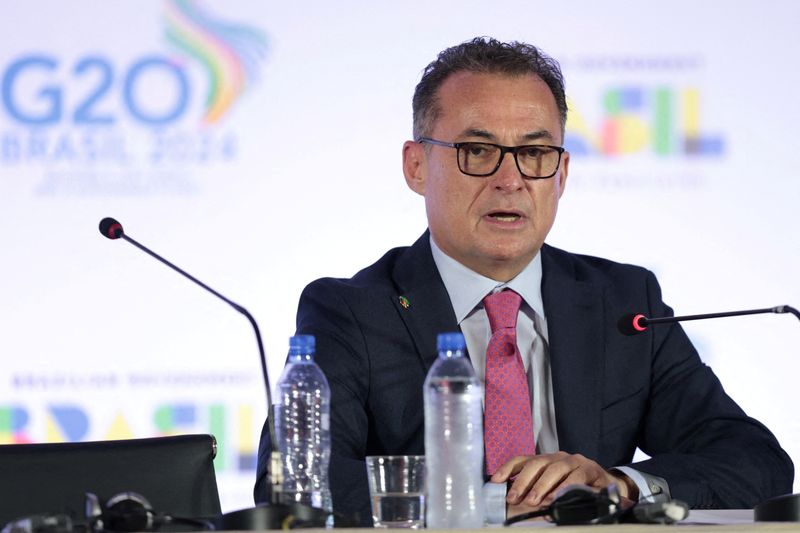By Friederike Heine and Balazs Koranyi
FRANKFURT/BERLIN (Reuters) – Upward pressure from wages means inflation is proving stubborn, Germany’s central bank said on Friday, a day after the European Central Bank delivered its first interest rate cut since 2019.
The warning from Europe’s biggest economy is likely to reinforce expectations that interest rates can only come down slowly. Inflation has fallen from double-digit territory in late 2022, but the “last mile” is proving tricky, both in the euro zone and the United States.
“Inflation is proving to be stubborn, especially in the case of services, where strong wage growth and the resulting cost pressures are major factors,” Germany’s Bundesbank said in a twice-yearly update of its economic projections.
“Negotiated wages are expected to rise particularly sharply this year,” it added.
The bank now sees inflation in Germany at 2.8% this year, up from a 2.7% prediction six months ago, and growth at just 0.3%, below a 0.4% forecast made in December.
“While the inflation rate in Germany is continuing to decline, the pace is subdued,” Bundesbank President Joachim Nagel said. “We on the ECB Governing Council are not driving on auto-pilot when it comes to interest rate cuts.”
ECB policymakers this week were presented with increased staff forecasts for euro zone inflation, which is now expected to stay above the bank’s 2% target until late next year.
SLOW RECOVERY
The German economy was the weakest among its large euro zone peers last year, as high energy costs, feeble global orders and record high interest rates took their toll.
German Economy Minister Robert Habeck struck a more optimistic note on Friday, however, saying that “if things go well,” economic growth could come as high as 1.5% in 2025.
Speaking at an event for family-run businesses, Habeck said the economic problems of the past two years – a sharp rise in energy prices and high inflation due to the war in Ukraine – had been brought “under control,” which would now pave the way for growth.
Meanwhile, new data from Germany on industrial production and trade for April provided a mixed picture.
While exports continued their upward trend, rising by 1.6% in April compared with the previous month, industrial production fell by 0.1% month-on-month, pointing to sluggish economic recovery. The trade surplus remained almost unchanged at 22.1 billion euros ($24.07 billion).
The data “raises fears that overall economic growth will be meagre in the second quarter,” said Thomas Gitzel, chief economist at VP Bank. “Higher output in industry initially requires stronger growth in incoming orders.”
Data earlier this week showed industrial orders also fell unexpectedly in April, marking the fourth month of decreases in a row, due to a significantly smaller number of large-scale orders.

“Yesterday’s drop in new orders as well as still high inventories show that any rebound in industrial activity will remain muted,” said Carsten Brzeski, global head of macro at ING.
($1 = 0.9181 euros)







